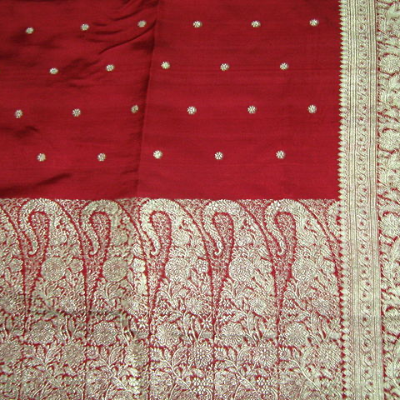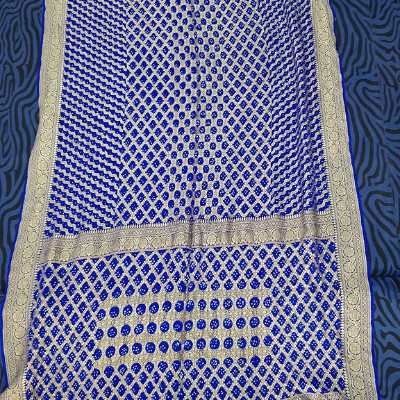Banarasi
- Bsae MaterialCottonSilk Mulberry / Pure
- StatesUttar Pradesh
- Price Range₹3000 - 300000
- WeatherAll Weather
- CareDry Clean
- TextureSoft and Smooth
- UsecaseMainly for wedding purposes, but nowadays used for making suits, gowns and dupattas
History
One of the earliest English travelers and traders to visit India, the Indian Ocean, Mesopotamia, the Persian Gulf, and Southeast Asia, Ralph Flitch, who was also a merchant from London described Banaras as a thriving hub of cotton textile industry. But the story of how the cotton manufacturing hub became a renowned place for royal silk production is worth knowing.
As per the mythological tales written in Rig Veda, Hiranya- a gold-made cloth was worn by the Gods. The description of Hiranya has been found very much similar to that of a Banarasi silk saree that is known for its zari embellishments.
Banaras has been the epicenter of weaving since the beginning of time but its value was appreciated by the Mughals. During the 14th century, when Mughals wore the crown, brocade weaving with intricate designs using silver and gold threads became one of the Banaras’ specializations. Emperor Akbar, who had an affectionate eye for finer things like gem-encrusted swords, tough and strong elephants, turban accessories, Persian wine, and the list goes on, was an admirer of pure gold embroidery, the Zari. He wrapped his wives and the women in his harem with regal silk sarees with zari works. His affection for Banarasi silk made him ornament a palace with this fabric. The palace became a visual treat having Banarasi silk carpets and wall hangings.
Even after centuries, when British colonizers stepped on this land, they were puzzled by the beauty of Banarasi Silk. After independence, Banarasi silk gained its expansion of demand, and many small-scale industries grew for its production.

Description
The making of the Banarasi silk designs is an interesting procedure. The designs are first created on paper by punching holes into making it look like braille. The patterns created are called naksha patras and one pattern guides a row and hundred such patterns are created for a single saree.
Fabrication of Banarasi Saree takes a lot of effort and time and so it ends up being a little expensive. Today different women from different religions, regions, nationalities adore this luxurious 9 yards beauty. Banarasi sarees are considered the perfect wedding outfit in India for generations now.
There are many types of Banarasi sarees like Korial Banarasi, Pashmina Banarasi, Traditional Banarasi, Tanchoi Banarasi Sarees, etc. Banarasi sarees are famous for their silver, gold, and zari handwork on the rich silk fabric with astounding embroideries.

Where to Source
Banaras / Varanasi Utter Pradesh
Contact Us For Inquiry
Reach out to us at fabricsthan@gmail.com and we’ll help you find your fabric
